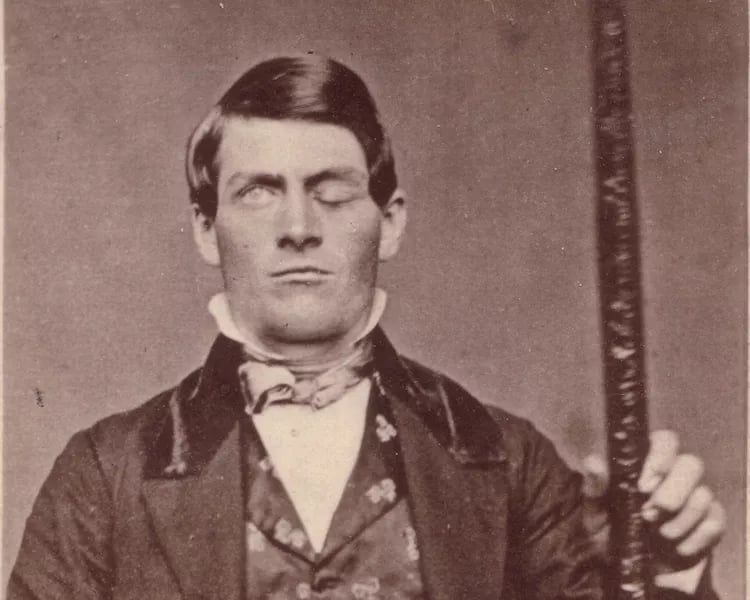Psychological Cases


Phineas Gage
By: Tan Sri Son | 17.02/2025
Phineas Gage: The Man Whose Brain Revealed the Secrets of Personality
In the history of psychology and neuroscience, few cases are as famous or as instructive as that of Phineas Gage. His story is not only remarkable for the survival of a near-fatal accident but also for the profound insights it provided into the human brain, personality, and behavior. Gage’s experience became a cornerstone case in understanding the relationship between brain structures and psychological functions, and it continues to captivate scientists, historians, and the general public.
Early Life and Work
Phineas Gage was born in 1823 in New Hampshire, United States. He grew up in a working-class family and eventually became a railroad construction foreman. Known for being responsible, diligent, and mild-mannered, Gage earned the trust and respect of his colleagues. His life appeared ordinary, dedicated to hard work and routine, until a single moment in 1848 changed it forever.
The Accident
On September 13, 1848, Gage was supervising the construction of a railroad in Cavendish, Vermont. His job involved compacting explosive powder into rock to clear the path for the tracks. In a tragic mishap, a spark ignited the powder while Gage was tamping it down with an iron rod. The rod, measuring over three feet in length and weighing 13 pounds, shot through his left cheek, behind his eye, and out through the top of his skull.
Miraculously, Gage did not die immediately. He remained conscious, able to speak, and even walked with assistance shortly after the accident. Physicians at the scene and later Dr. John Martyn Harlow, who treated him extensively, marveled at the survival of the man despite the catastrophic nature of the injury.
Changes in Personality and Behavior
Although Gage’s physical recovery was extraordinary, the psychological consequences were profound. Before the accident, he had been responsible, dependable, and socially well-adjusted. After the injury, those who knew him reported dramatic changes:
He became impulsive and irresponsible, unable to maintain long-term plans or commitments.
He exhibited outbursts of anger and socially inappropriate behavior, often acting recklessly.
His ability to interact politely and maintain social norms diminished.
These changes suggested that damage to the frontal lobes, the region of the brain through which the iron rod passed, had a direct effect on his personality, decision-making, and emotional regulation.
Scientific Significance
Phineas Gage’s case was groundbreaking in the study of brain-behavior relationships. Prior to this incident, the brain was often viewed as a uniform organ without specialized functions. Gage’s drastic personality changes provided some of the earliest evidence that specific brain regions, particularly the frontal lobes, are critical for social behavior, planning, judgment, and personality.
Neuroscientists today continue to study Gage’s skull and reconstruct his brain damage using modern imaging techniques. These studies confirm that the accident destroyed portions of his ventromedial prefrontal cortex, which is essential for decision-making, emotional regulation, and social conduct. His case is cited in psychology, neurology, and psychiatry as a classic example of how physical brain injury can radically alter the human mind.
Legacy and Cultural Impact
Beyond its scientific importance, the story of Phineas Gage has permeated popular culture, inspiring books, documentaries, and even fictional portrayals. His case humanizes the abstract study of the brain, showing the intimate connection between physical structures and the essence of personality. It also serves as a reminder of the resilience of the human body and the extraordinary ways individuals adapt to trauma.
Gage went on to live for another 12 years after the accident, eventually working as a stagecoach driver in Chile, which suggests he regained some functional abilities despite his profound behavioral changes. He died in 1860, leaving behind a legacy that bridges medicine, psychology, and human curiosity.
Conclusion
The story of Phineas Gage is more than a tale of survival; it is a cornerstone in the understanding of the human brain and personality. Through his accident, the world gained insight into the role of the frontal lobes in emotional regulation, social behavior, and decision-making. Gage’s experience reminds us that the mind is deeply connected to the brain’s physical structure, and that even a single traumatic event can transform a person in profound and lasting ways.
Coming Soon
We're on a mission ..........................

Discover our full library of The Theos e-magazines and articles — all completely free to read.
We are a crowdfunded publication, dedicated to sharing knowledge, reflection, and theology with readers around the world.
Your support and donations help us continue offering open, accessible content for everyone, everywhere.
Join us in keeping wisdom free.
@ the theos since 2023 © 2023. All rights reserved.